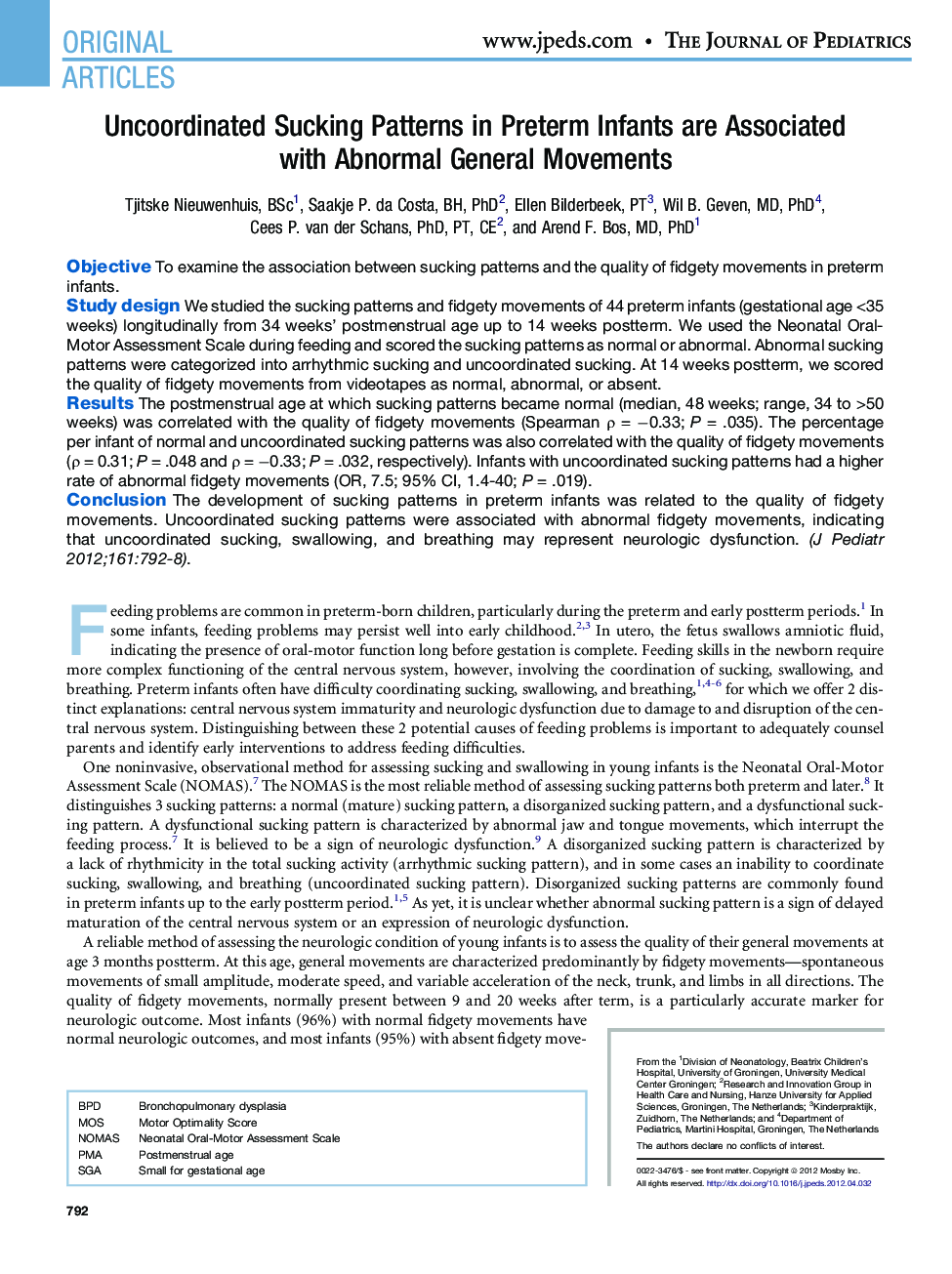| کد مقاله | کد نشریه | سال انتشار | مقاله انگلیسی | نسخه تمام متن |
|---|---|---|---|---|
| 6224709 | 1607476 | 2012 | 7 صفحه PDF | دانلود رایگان |

ObjectiveTo examine the association between sucking patterns and the quality of fidgety movements in preterm infants.Study designWe studied the sucking patterns and fidgety movements of 44 preterm infants (gestational age <35 weeks) longitudinally from 34 weeks' postmenstrual age up to 14 weeks postterm. We used the Neonatal Oral-Motor Assessment Scale during feeding and scored the sucking patterns as normal or abnormal. Abnormal sucking patterns were categorized into arrhythmic sucking and uncoordinated sucking. At 14 weeks postterm, we scored the quality of fidgety movements from videotapes as normal, abnormal, or absent.ResultsThe postmenstrual age at which sucking patterns became normal (median, 48 weeks; range, 34 to >50 weeks) was correlated with the quality of fidgety movements (Spearman Ï = â0.33; P = .035). The percentage per infant of normal and uncoordinated sucking patterns was also correlated with the quality of fidgety movements (Ï = 0.31; P = .048 and Ï = â0.33; P = .032, respectively). Infants with uncoordinated sucking patterns had a higher rate of abnormal fidgety movements (OR, 7.5; 95% CI, 1.4-40; P = .019).ConclusionThe development of sucking patterns in preterm infants was related to the quality of fidgety movements. Uncoordinated sucking patterns were associated with abnormal fidgety movements, indicating that uncoordinated sucking, swallowing, and breathing may represent neurologic dysfunction.
Journal: The Journal of Pediatrics - Volume 161, Issue 5, November 2012, Pages 792-798